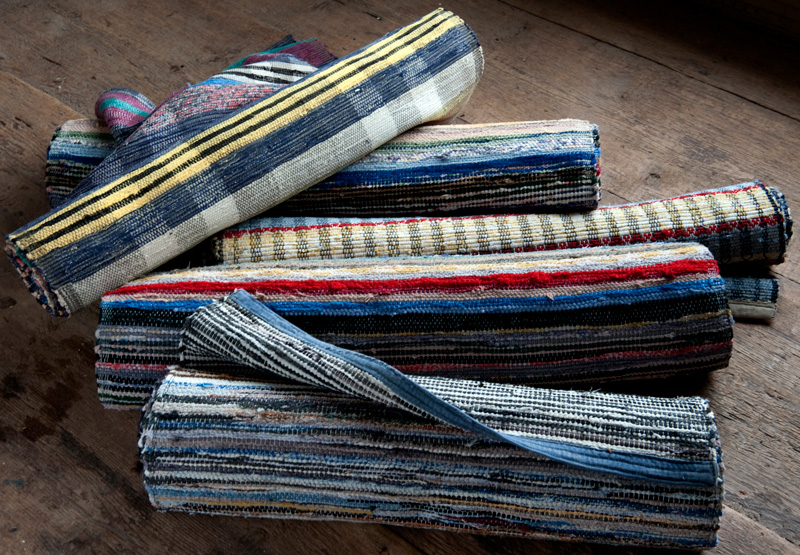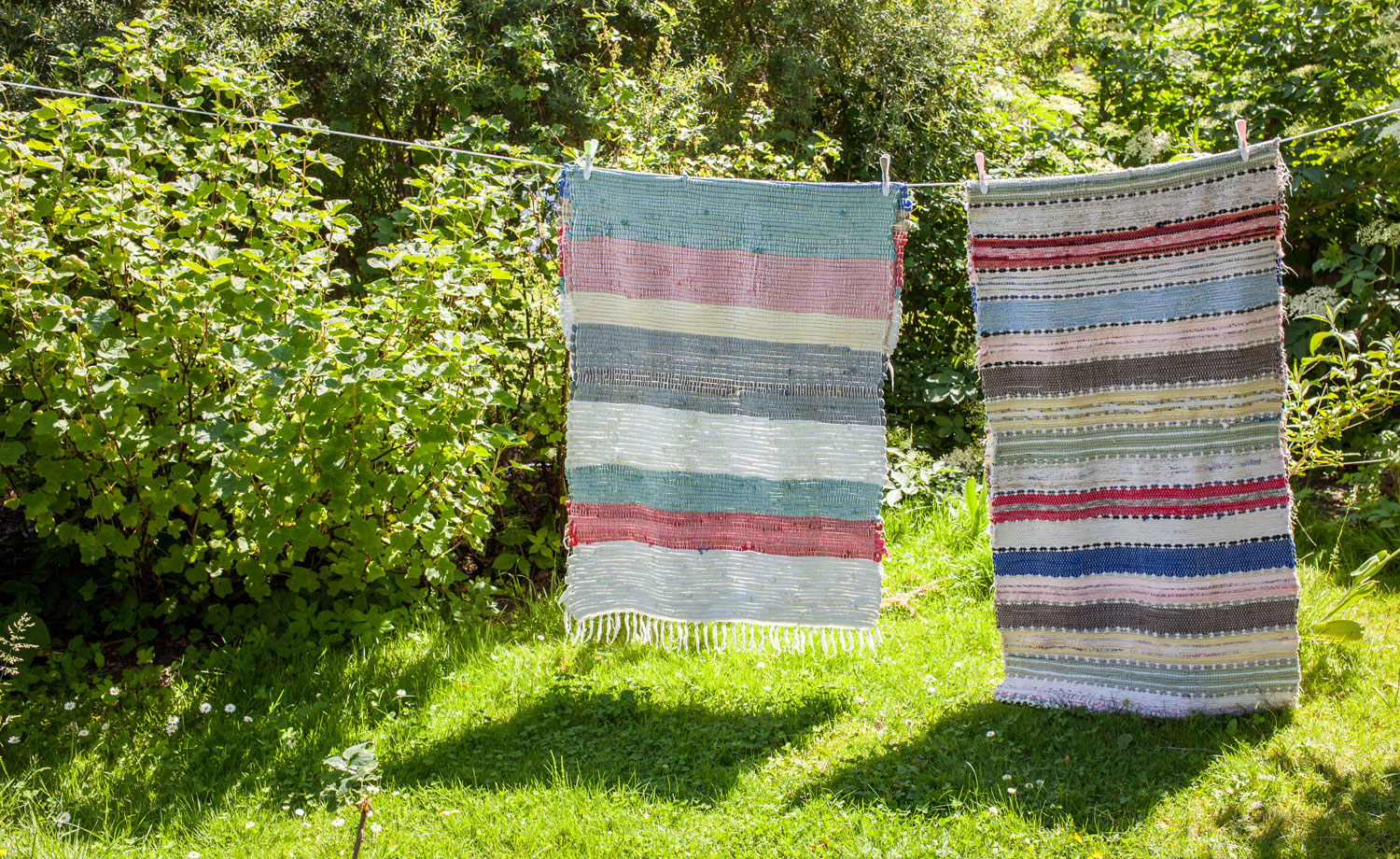- Startpage
- In English
- The Inventory
- Rag-rugs
Rag-rugs
The tradition of weaving rag-rugs grew during the first half of the 19th century and is connected to the tradition of placing rugs on the floor. Initially the rag-rugs only adorned the floors on major holidays and festive occasions.
Location: Nation wide

From 1850 onwards, the tradition of weaving rugs was spread all over Sweden and the rugs have similar patterns and colours. All available textile materials could be used and all discarded clothes were utilised. Initially the rugs had muted colours, but colourful features later became more common.
As industrialisation progressed, access to materials increased and books were produced with new suggestions for patterns and techniques, which came to have a great impact on what the rugs looked like. Many weavers travelled from village to village weaving rugs, which came to be an important extra source of income. In the early 20th century, there were many skilled weavers who could weave rugs in a number of different patterns and techniques.
The tradition of weaving – and using – rag-rugs became less popular over time and interest in the technique declined. However, after 1980 rag-rugs gained attention once again. Knowledge about weaving rag-rugs is today passed on primarily through courses and training programmes connected to various weaving houses. Social media such as Facebook, blogs and YouTube now also play an important role as means to pass on knowledge. Ultimately though, knowledge about how to weave rag-rugs rests on individuals whose creativity and creative force contributes to promoting the continued manufacture and use of rag-rugs.

